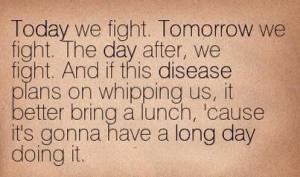So, it’s been awhile since I’ve posted.
Ok, ok……..a L-O-N-G while.
A lot has happened over the past six months! So, today….a summary post. I’m working on going back and filling in the gaps (with pictures!). My goal is to get back to updating this blog regularly! So…..here goes!
Last Winter, Jason and I were asked to become Patient Advocates for Awareness for the FH Foundation. In April, we traveled to Pasadena, CA for our Patient Advocacy training. We spent three days learning about FH from several specialists; received public speaking training on how to share our stories; met fellow patients with FH and HoFH; and had the opportunity to meet those that work in the Foundation’s office who do such a great job providing us with answers to our questions, resources, professionally designed materials, etc.
June was a pretty significant month as far as Avery’s health goes. She had a port surgically placed in her chest with a tube that runs from her carotid artery to the port. At the end of June, she had her first LDL apheresis treatment at Nemours/Alfred I. duPont in Delaware. Generally, Avery will do apheresis every two weeks. Today was her 11th treatment.
Also in June, we started a Crowdrise fundraiser to raise money for the FH Foundation. To date we have raised $3,360 for the Foundation! We’re so THANKFUL to our friends and family who have donated and feel absolutely blessed beyond words by those that don’t even know us who have donated. If you haven’t donated, you still can (all donations are tax deductible). We’re still trying to get to the $5,000 mark. Click here to donate now.
On July 1st, our insurance coverage year started over. Because of Avery’s condition, we elected to go with the policy with the highest coverage level, which unfortunately has a $10,000 out-of-pocket deductible/maximum. Luckily for us, our insurance company seems very confused about what they should be paying and we’re still trying to get them to pay bills from June. Unlucky for us, I think the time when things are all sorted out and we begin getting bills for our portion is just around the corner. Not sure where $10k is going to come from, but we’ll cross that bridge when we come to it.
In September, Jason and I were invited to attend the 2015 FH Summit, which was also held in Pasadena, CA. This time we were able to add a day of leisure onto the front and back-end of our trip to enjoy a little bit of the beautiful California coast and some much needed R & R.
In October, City Ballet School held their annual Princess Tea. This year we were blessed to be the recipient of the proceeds from this event. We are so appreciative of the kindness and thoughtfulness shown to us by the Director of CBS, Mrs. Danielle Horochowski, as well as the other teachers, students and their parents. We’re so thankful to be a part of the CBS family!
Lastly, I’ve tried to bring some consistency by renaming the blog, changing my twitter handle, etc. Please change your bookmarks and update your contact information so you can follow Avery’s journey with HoFH and PLEASE help us spread the word on social media by Liking/Commenting and/or Sharing our posts, subscribing to my blog, and following me on Twitter and Instagram. We’re trying hard to bring attention to and raise awareness for FH and HoFH. If you have news/media contacts you would be willing to share with us, please send us a message. I’ve made it easy for you to follow me. Just click on the links below!
Subscribe to the blog: www.averysfight.wordpress.com
Follow me on Twitter: @AverysFight
Follow me on Instagram: AverysFight
Like our Facebook Page: www.facebook.com/fightingforavery
That’s it for now!
Stay tuned for more updates and as always, thank you to everyone who has supported us on our journey!
Michelle


